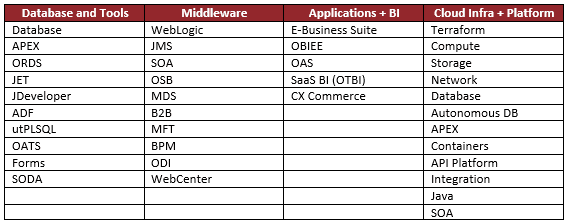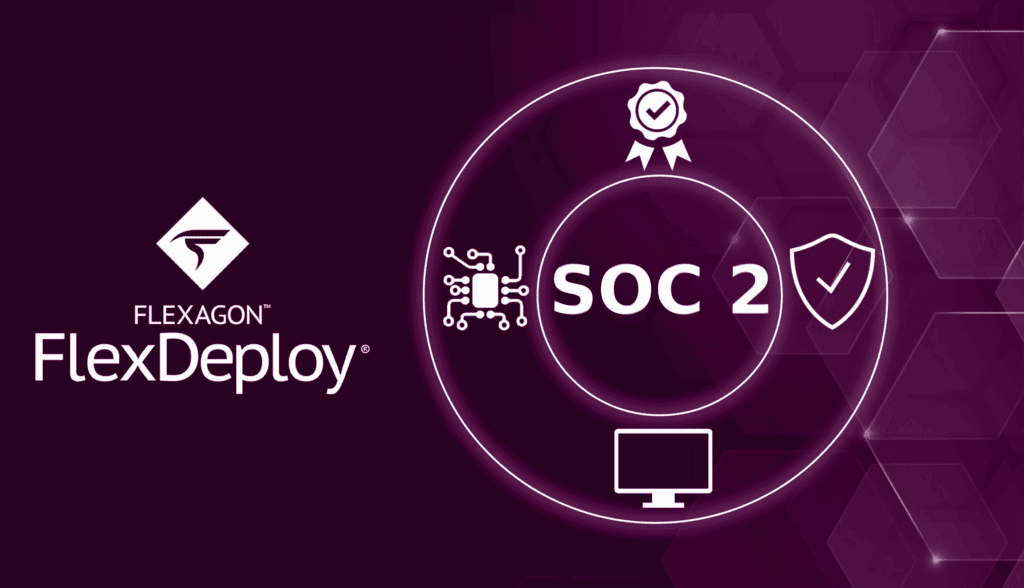The following is a summary of the information covered in the webinar: DevOps for the Oracle Ecosystem, which can be accessed here.
The Purpose of DevOps
DevOps, in the most basic sense, is an intersection of people, process, and technology used to develop, deliver, and maintain software solutions. Three critical DevOps processes include build automation, deployment automation, and release orchestration, and they can look different for everyone based on their organization’s individual needs and capabilities. However, it is essential for a DevOps platform (technology, in the people/process/technology triad) to allow a company to evolve and adapt its processes to become more continuous over time.
FlexDeploy is one such DevOps platform. It offers a wide array of support for commercial and open source tools, including many Oracle technologies. The plugins are out-of-the-box and easy to integrate across the rest of your toolchain!

DevOps for Oracle
FlexDeploy’s extensive support for Oracle includes database/tools, middleware, applications, and cloud. The following technologies are supported out-of-the-box:

“Flexagon continues to pioneer continuous delivery for enterprise software platforms.” – Forrester Wave: Continuous Delivery and Release Automation, Q2 2020
Where can you run FlexDeploy?
In short, it can be run anywhere, including on on-prem, on Oracle Cloud Infrastructure, or on Oracle Java Cloud Service.
For on-prem, FlexDeploy can be run on top of WebLogic or Tomcat. You need a relational database, which can be Oracle Database, Oracle Autonomous Database, MySQL, or Postgres. FlexDeploy can also be run in a Docker run time or in a Kubernetes cluster.
Running FlexDeploy on Oracle Cloud Infrastructure is similar. You can run it on WebLogic or Tomcat use the Oracle Database, Oracle Autonomous Database, MySQL, or Postgres. Oracle Kubernetes Engine (OKE) is a good option to be able to build and deploy your own cloud native applications, and to host and run FlexDeploy itself.
If you want to push up into the PaaS level, you can run FlexDeploy on Oracle Java Cloud Service. The database options are similar, including Oracle Database, Oracle Autonomous Database, MySQL, and Postgres.
There is a lot of flexibility when running FlexDeploy. You can also choose to begin running on-prem and then move to the cloud later.
Support for Infrastructure, Database, Middleware, and Apps
You should be looking to automate your SDLC on-prem and/or in the cloud. This can be done with existing resources and by leveraging many popular tools that do an excellent job at this.
For example, Ansible, Puppet, and Terraform can help you automate your Infrastructure Resource Management, when used in conjunction with FlexDeploy. For database, you can use your database-related infrastructure provisioning capability to deploy different types of changes, including schema changes, across different environments using both generic JDBC plugin and the Oracle database plugin. FlexDeploy also has support for more traditional middleware (i.e., Fusion Middleware) and BI.
If you are leveraging FlexDeploy for those technologies, that means you can use the same capability when running in the cloud and don’t have to redo pieces to make it work. You will have to point it to a different server because it is now running in the cloud rather than on-prem. But the workflows and plugins just work!
For applications, FlexDeploy supports both E-Business Suite and SaaS, including SaaS extensions and being able to automate the configuration and migration of changes across SaaS applications.
You can also build cloud native applications and deploy them into Kubernetes and build serverless applications using functions.
FlexDeploy also provides out-of-the-box support for platform services like API Platform and Oracle Integration Cloud.
Want to watch the full webinar?
FlexDeploy allows you to run various technologies both on-prem and/or in the cloud, depending on your preferences and capabilities. It supports a wide variety of technologies, including extensive coverage of the Oracle ecosystem. So, wherever you are running and whatever tools you are using, FlexDeploy can help you move further in your automation journey, including build automation, deploy automation, and release orchestration.
Watch the full webinar for more in-depth information!
Want to keep learning? Check out our other on-demand and upcoming webinars.
Please comment below with any questions.




